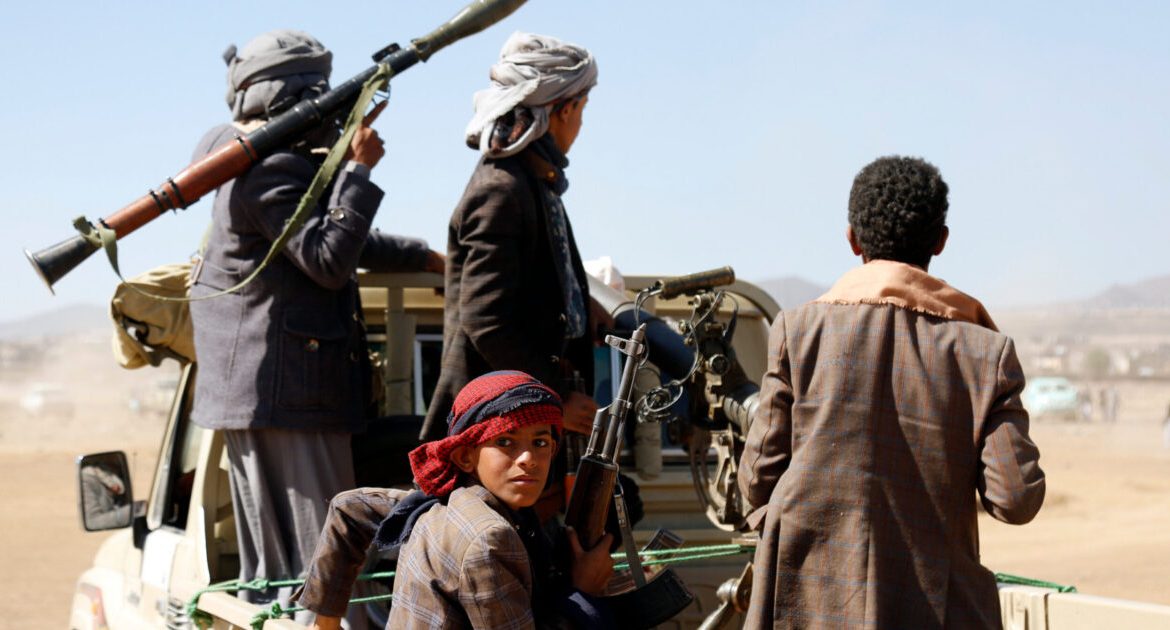
Israel’s War with Iranian Proxies: Eliminating Hezbollah and Houthi Leadership Across the Middle East


Since October 7, Iran-backed terrorists, Hamas, Hezbollah, the IRGC, and the Houthis have all threatened and attacked Israel. In response, Israel has launched a sweeping campaign of strategic strikes and targeted assassinations across the Middle East. Expanding far beyond Gaza and Iran, this campaign has systematically eliminated the leadership of Tehran’s most powerful proxy forces. From Hezbollah’s underground bunkers in Beirut to Houthi government offices in Yemen, Israeli precision strikes have decapitated Iran’s key regional allies and disrupted their ability to operate.
A most significant blow came against Hezbollah. On September 27, 2024, Secretary General Hassan Nasrallah was killed in Beirut when Israeli F-15I fighters dropped more than 80 bunker-busting bombs on Hezbollah’s headquarters, located 60 feet beneath the Dahieh suburb. The strike, codenamed New Order, occurred while Nasrallah was meeting senior commanders.
Israeli intelligence had tracked him for months, aided by an Iranian mole who reportedly provided his exact location. Among those killed in the operation was Ali Karaki, commander of Hezbollah’s Southern Front, who had been directing operations against northern Israel.
Nasrallah’s death was followed within days by the assassination of his long-groomed successor, Hashem Safieddine. On October 3, 2024, Israeli aircraft dropped roughly 73 tons of bombs on Safieddine’s underground bunker in Beirut, a strike even larger than the one that killed Nasrallah.
Safieddine, who had been positioned as Nasrallah’s replacement since 1994, represented Hezbollah’s continuity plan. By eliminating him so soon after Nasrallah, Israel deliberately dismantled the organization’s succession structure, leaving it without clear leadership for weeks.
This decapitation strategy extended further. Ibrahim Aqil, another senior Hezbollah commander, was killed in Beirut in a separate Israeli precision strike, further degrading the group’s military command. The timing of these operations was particularly striking: Lebanese Foreign Minister Abdallah Bou Habib revealed that Nasrallah had agreed to a temporary ceasefire only days before his death, suggesting Israel sought to prevent de-escalation.
Experts described Nasrallah as “the brain, the spinal cord, and the beating heart of Hezbollah,” underscoring how his death, compounded by the loss of Safieddine and other senior leaders, crippled the organization’s ability to plan, inspire, and conduct operations.
Together, these strikes created a profound leadership vacuum within Hezbollah, forcing the group to operate without direction at a critical moment.
The Houthis, another Iran-backed terrorist organization, have attacked shipping in the Red Sea, including U.S. vessels, while openly threatening to annihilate Israel and the United States. Like Hamas and Hezbollah, they soon became targets of Israel’s decapitation campaign.
On August 28, 2025, Israeli forces launched a coordinated strike in Sanaa, firing more than ten missiles in under five minutes at safe houses where senior Houthi officials had gathered to watch a televised speech by their leader Abdul-Malik al-Houthi. The attack coincided with what was described as a “routine workshop” to evaluate government performance, ensuring the presence of top officials. Prime Minister Ahmed al-Rahawi, Defense Minister Mohamed al-Atifi, and Chief of Staff Muhammad Abd al-Karim al-Ghamari were all killed, along with nine other cabinet ministers.
Israeli media described the operation as the elimination of “the entire Houthi cabinet.” By simultaneously destroying multiple government buildings and safe houses, Israel delivered unprecedented damage to the Houthis’ political and military command.
The timing of the strike revealed sophisticated intelligence work. Israeli operatives had monitored the rebel-owned television broadcast in real time, identifying the gathering of senior leaders. Reports suggest Israeli intelligence even tracked whether Abdul-Malik al-Houthi realized his commanders were being killed during the broadcast; he showed no sign of awareness. Israeli estimates later confirmed that the prime minister, most of his ministers, and other senior figures were eliminated, an outcome the IDF assessed as a near-total collapse of the Houthis’ leadership.
The scale and symbolism of the operation were underscored by Israeli Defense Minister Israel Katz, who declared that the military had delivered an “unprecedented knockout blow.” Quoting the Biblical plagues of Egypt, he warned the Houthis, “After the plague of darkness comes the plague of the firstborn,” and then claimed Israel had carried out that warning. Analysts called the strike a serious setback for the rebels, marking a clear Israeli shift from targeting infrastructure to assassinating senior political and military leaders, a move that threatened the Houthis’ entire command structure.
The impact was immediate. The day after Israel confirmed the death of the Houthi prime minister, Iran-backed rebels stormed the offices of two United Nations agencies in Sanaa, detaining at least 11 UN personnel. The incident suggested that the Houthis, enraged and destabilized by the leadership losses, lashed out in desperation. At the same time, the operation demonstrated Israel’s ability to conduct intelligence-driven precision strikes across vast distances, Yemen lies nearly 1,800 kilometers (1,100 miles) from Israel, while crippling an enemy’s command structure in a single, coordinated attack.
These assassinations were part of Israel’s broader strategy, which began with lower-level officials and escalated to the top leadership of Hezbollah, Hamas, the Houthis, and even elements of the Iranian IRGC. Rather than conducting isolated strikes, Israel carried out a methodical campaign designed to dismantle entire command structures, leaving its adversaries leaderless and disorganized.
This stands as one of the most extensive targeted elimination efforts in modern Middle Eastern history, fundamentally reshaping the leadership of Iran’s proxy network across Gaza, Lebanon, Syria, Iran, Yemen, and Qatar. By coordinating operations against multiple organizations in multiple countries at once, Israel has severely weakened Iran’s ability to direct its regional proxies and has threatened the cohesion of Tehran’s so-called “Axis of Resistance.”
The post Israel’s War with Iranian Proxies: Eliminating Hezbollah and Houthi Leadership Across the Middle East appeared first on The Gateway Pundit.
